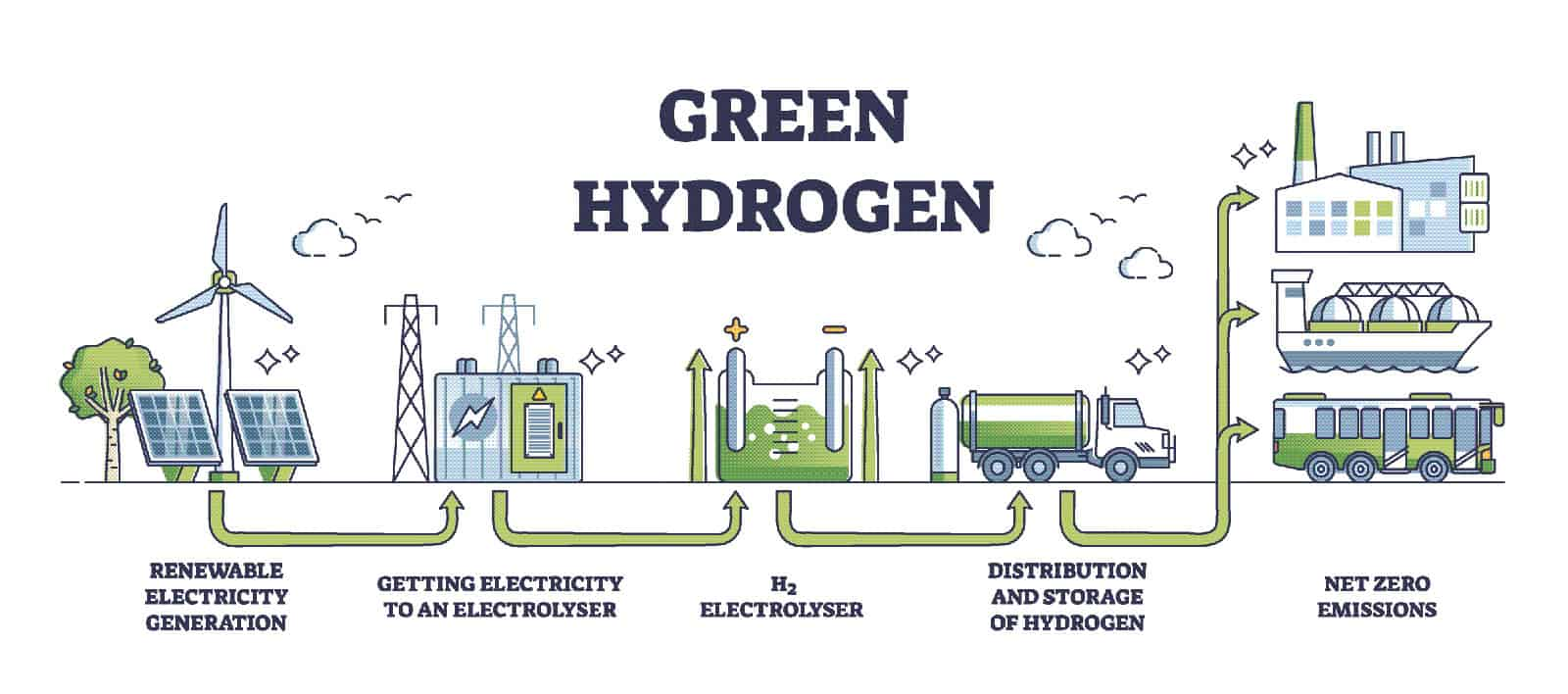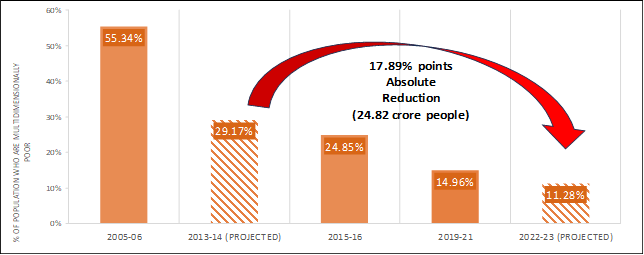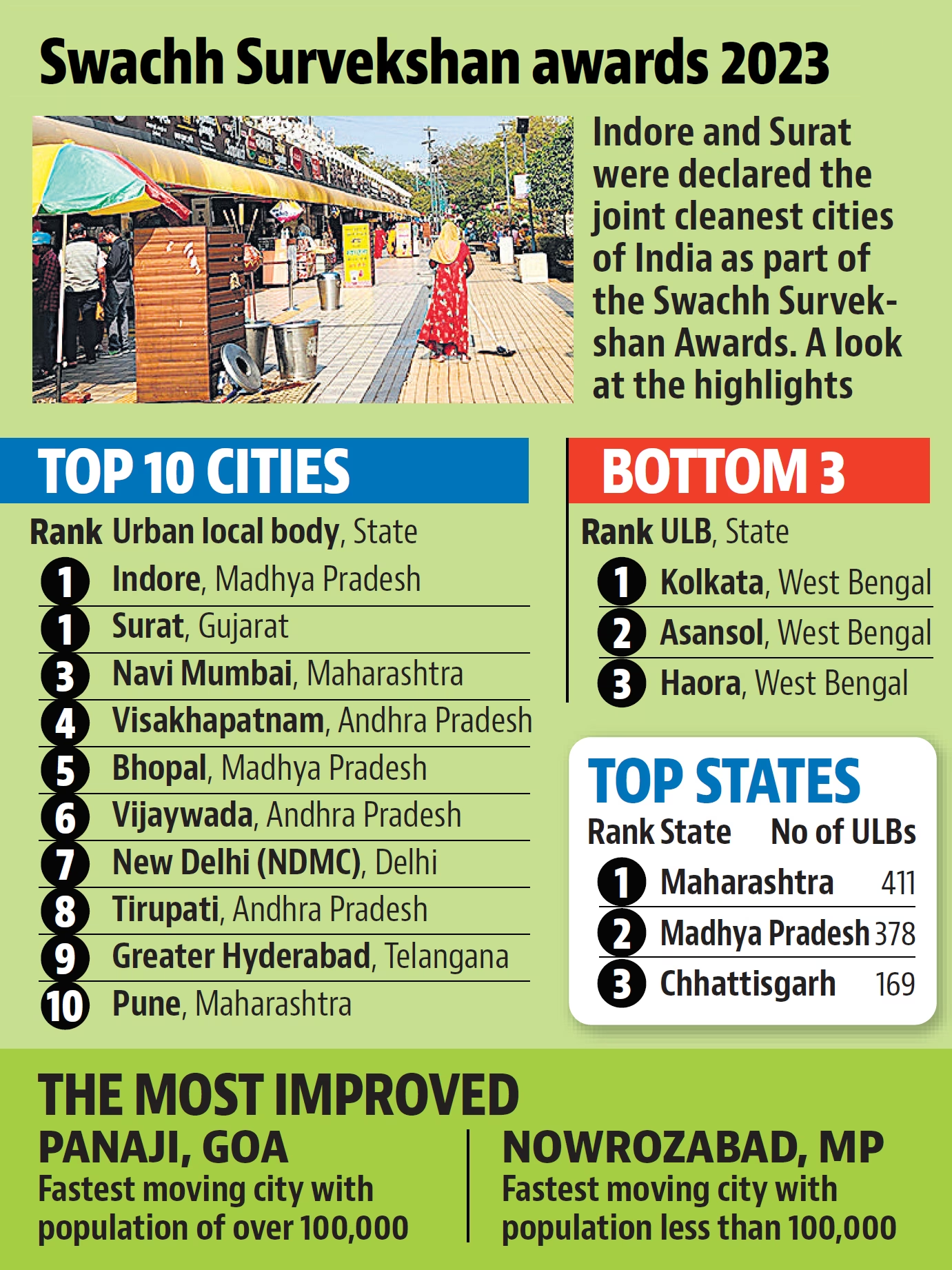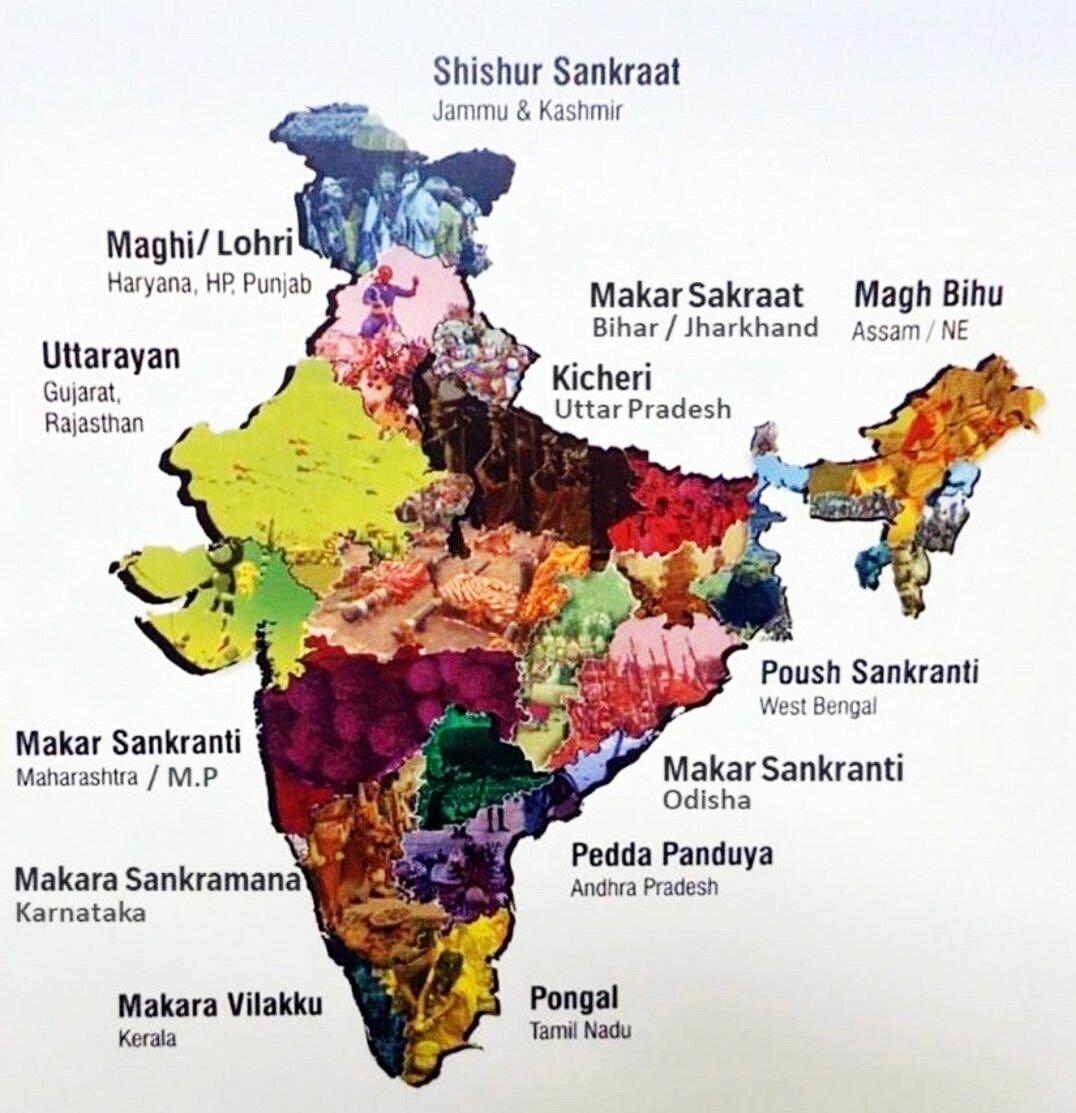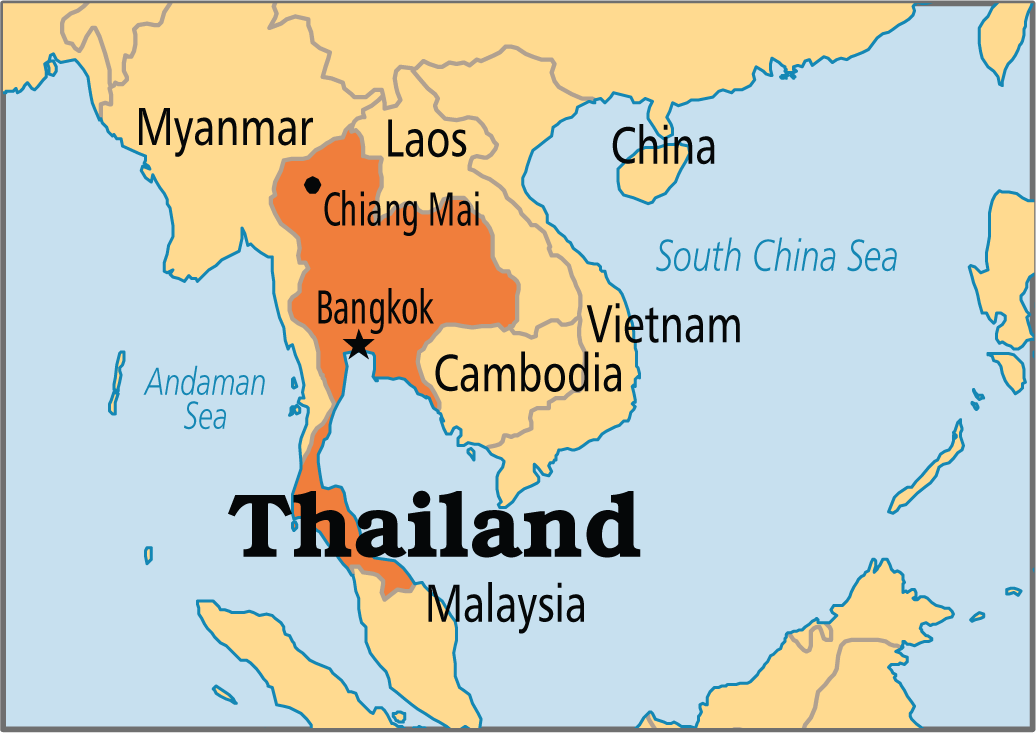Green Hydrogen: Enabling Measures Roadmap for Adoption in India
For Prelims: Net Zero by 2070, United Nations Climate Change Conference in Glasgow (COP26), Gray Hydrogen, Fossil Fuels, National Green Hydrogen Mission.
For Mains: Green Hydrogen: Enabling Measures Roadmap for Adoption in India, Government policies and initiatives for green hydrogen.
Why in News?
Recently, the World Economic Forum along with Bain & Company has released a report titled- Green Hydrogen: Enabling Measures Roadmap for Adoption in India, highlighting that Green Hydrogen production cost needs to be reduced to less than or equal to USD 2 per kg.
What are the Key Highlights of the Report?
- India’s Demand for Energy is Set to Surge:
- India is currently the third-largest economy in the world in terms of energy needs, and the country’s demand for energy is set to surge – demand is estimated to grow 35% by 2030.
- In 2022, India's energy import bill reached USD 185 billion, which is likely to increase if the country continues to meet its growing energy demand through traditional methods.
- At the same time, India has set a commitment to achieve Net Zero by 2070 at the United Nations Climate Change Conference in Glasgow (COP26), held in 2021.
- India is currently the third-largest economy in the world in terms of energy needs, and the country’s demand for energy is set to surge – demand is estimated to grow 35% by 2030.
- Criticality of Green Hydrogen:
- Green Hydrogen is critical to help meet India’s energy security needs while reducing emissions in hard-to-abate sectors on the path to net zero.
- Recognizing this, the Indian government launched the National Green Hydrogen Mission in 2022.
- The aim is to spur green hydrogen production and consumption through roughly USD 2.3 billion in incentive funding, to be distributed between 2022 and 2030.
- Current status of Hydrogen Production in India:
- Currently, India produces 6.5 million Metric Tonnes Per Annum (MMTPA) of hydrogen, predominantly for use in crude-oil refineries and fertilizer production.
- Most of India’s current hydrogen supply is Gray Hydrogen, which is produced using Fossil Fuels in a process that creates CO2 Gas Emissions.
- Green Hydrogen production requires an ample supply of Renewable Energy for the electrolysis process.
- India’s renewable energy potential can support its goals for green hydrogen growth but needs rapid capacity addition – additional capacity is required to generate green hydrogen as well as to meet the country’s electricity needs.
- There is limited on-the-ground traction for green hydrogen in the country; most are in a “wait-and-watch” phase. Many expect sizable production of green hydrogen to take effect beginning in 2027 and after.
- Constraints in Green Hydrogen:
- Important constraints for the expansion of green hydrogen in India include, on the supply side, the cost of production and delivery, and, on the demand side, Indian players’ readiness to consume green hydrogen in traditional industrial processes.
What is the Blueprint proposed by the Report for the evolution of Green Hydrogen in India?
- Reduce the Cost of Producing Green Hydrogen:
- Green hydrogen today costs roughly USD 4–5/kg to produce in India, approximately double the production costs for grey hydrogen.
- The majority of production costs for green hydrogen (50–70%) are driven by the need for round-the-clock (RTC) renewable electricity.
- Green hydrogen needs to come down to a benchmark goal of USD 2/kg for a green energy ecosystem to develop in India. This can be done through:
- Increasing direct subsidies for early adopters – for example, the USA has announced, under the Inflation Reduction Act (IRA), a tax credit of up to USD 3/kg of hydrogen.
- Supporting long capital investment cycles for technologies with long-term clarity on policies and incentives
- Encouraging the development and testing of indigenous electrolyzer technology
- Green hydrogen today costs roughly USD 4–5/kg to produce in India, approximately double the production costs for grey hydrogen.
- Reduce Costs related to Green Hydrogen Conversion, Storage, and Transport:
- Despite low production costs, infrastructure expenses (conversion facilities, storage, and transport) can significantly affect the overall cost of green hydrogen and its derivatives.
- Minimizing the costs of establishing this infrastructure, will reduce delivery costs and increase offtake.
- Essential interventions to achieve this are
- In the short to medium term, developing green hydrogen production clusters where a collaborative environment for production and offtake occur in close proximity.
- Investing in long-term infrastructure construction, including pipelines for transporting green hydrogen throughout the country.
- For example, the European Union’s European Hydrogen Backbone programme aims to develop a pipeline network in the EU.
- Essential interventions to achieve this are
- Support Industries that are most likely to Adopt Green Hydrogen:
- Certain industries are better positioned than others to embrace green hydrogen consumption.
- Incentives, subsidies, and other support mechanisms should target likely adopters to increase India’s domestic demand for green hydrogen.
- Chief among these are existing grey hydrogen users. Stakeholders can support domestic green energy demand among users of grey hydrogen by increasing direct subsidies.
- This will reduce green hydrogen costs in the short term and encourage long-term demand for the new energy source.
- Certain industries are better positioned than others to embrace green hydrogen consumption.
- Capitalize on India's Export Potential:
- India has the potential to become a hub for green hydrogen derivative exports given its relatively low-cost renewable energy, skilled workforce, and abundance of land for renewable energy expansion.
- Stakeholders can capitalize on India’s export potential by improving export infrastructure at ports.
- Green hydrogen derivatives need to be converted at the production site or ports before they can be exported.
- Export also requires storage and shipping facilities at port terminals.
- Disincentivize Carbon-Intensive Energy Sources:
- In addition to incentivizing green hydrogen adoption, India must also disincentivize carbon-intensive energy sources.
- India can divert subsidies away from high-emission sources and redirect funds toward the green energy transition.
- A comprehensive carbon-tax regime could help India meet rising energy demand, without compromising energy affordability for the population.
What is Green Hydrogen?
- About:
- Hydrogen is a key industrial fuel that has a variety of applications including the production of ammonia (a key fertilizer), steel, refineries and electricity.
- However, all of the hydrogen manufactured now is the so-called ‘black or brown’ hydrogen because they are produced from coal.
- Hydrogen is the most abundant element in the universe. But pure, or the elemental hydrogen, is very scarce.
- It almost always exists in compounds like with oxygen to form water.
- But when electric current is passed through water, it splits it into elemental oxygen and hydrogen through electrolysis.
- Colors attached to hydrogen indicate the source of electricity used to derive the hydrogen molecule.
- Need for Producing Green Hydrogen:
- Hydrogen is a great source of energy because of its high energy content per unit of weight, which is why it is used as rocket fuel.
- Green hydrogen in particular is one of the cleanest sources of energy with close to zero emission.
- It can be used in fuel cells for cars or in energy-guzzling industries like fertilizers and steel manufacturing.
- Countries across the world are working on building green hydrogen capacity as it can ensure energy security and also help in cutting carbon emissions.
- Green hydrogen has become a global buzzword, especially as the world is facing its biggest-ever energy crisis and the threat of climate change is turning into a reality.
What are the other Initiatives Related to Renewable energy?
- Jawaharlal Nehru National Solar Mission (JNNSM)
- International Solar Alliance
- PM- KUSUM
- National Wind-Solar Hybrid Policy
- Rooftop Solar Scheme
UPSC Civil Services Examination Previous Year Question (PYQ)
Q. Consider the following heavy industries: (2023)
- Fertilizer plants
- Oil refineries
- Steel plants
Green hydrogen is expected to play a significant role in decarbonizing how many of the above industries?
(a) Only one
(b) Only two
(c) All three
(d) None
Ans: C
Q. With reference to green hydrogen, consider the following statements : (2023)
- It can be used directly as a fuel for internal combustion.
- It can be blended with natural gas and used as fuel for heat or power generation.
- It can be used in the hydrogen fuel cell to run vehicles.
How many of the above statements are correct?
(a) Only one
(b) Only two
(c) All three
(d) None
Ans: (c)
Q. Hydrogen fuel cell vehicles produce one of the following as “exhaust” (2010)
(a) NH3
(b) CH4
(c) H2O
(d) H2O2
Ans: (c)
India-Nepal Power Pact
For Prelims: India-Nepal Power Pact, India-Nepal Treaty of Peace and Friendship of 1950, Surya Kiran, Mahakali Treaty, Kalapani-Limpiyadhura-Lipulekh trijunction.
For Mains: Major Areas of Cooperation Between India and Nepal, Major Challenges to India Nepal Relations.
Why in News?
India and Nepal recently signed a long-term agreement for the export of power. The agreement was inked during the 7th meeting of the Nepal-India Joint Commission, highlighting the strengthening ties between the two nations.
What are the Key Takeaways From the 7th Meeting of the Nepal-India Joint Commission?
- Power Export Agreement: India and Nepal signed a bilateral agreement for the export of 10,000 MW of power in the next 10 years.
- Cross-Border Transmission Lines Inauguration: Three cross-border transmission lines were jointly inaugurated including the 132 kV Raxaul-Parwanipur, 132 kV Kushaha-Kataiya, and New Nautanwa-Mainahiya lines.
- Renewable Energy Cooperation: A Memorandum of Understanding (MoU) was signed between the Nepal Electricity Authority and India's National Thermal Power Corporation Limited for cooperation in renewable energy.
- Agreement for Satellite Service : The Service Agreement for Munal Satellite developed by Nepal Academy of Science and Technology between Nepal Academy of Science and Technology and NewSpace India Limited was launched.
- This satellite developed by Nepali students shall be launched on a gratis basis on an Indian launch rocket.
What are the Major Areas of Cooperation Between India and Nepal?
- About:
- India and Nepal, being immediate neighbors, enjoy special bonds of friendship and collaboration marked by an open border and strong people-to-people connections rooted in kinship and culture.
- Nepal shares a border of over 1850 km with five Indian states – Sikkim, West Bengal, Bihar, Uttar Pradesh and Uttarakhand.
- The India-Nepal Treaty of Peace and Friendship of 1950 forms the bedrock of the special relations that exist between India and Nepal.
- Economic Cooperation: India is Nepal's largest trade partner and the largest source of foreign investments, besides providing transit for almost the entire third country trade of Nepal.
- India accounts for about two-third of Nepal’s merchandise trade and about one-third of trade in services.
- Recently, India and Nepal agreed to review the Treaty of Transit and the Treaty of Trade, proposed amendments to existing agreements, strategies for enhancing investment, the harmonization of standards and the synchronized development of trade infrastructure.
- India accounts for about two-third of Nepal’s merchandise trade and about one-third of trade in services.
- Defense Cooperation: India has been aiding the modernization efforts of the Nepal Army through equipment supply and training provisions.
- The joint military exercise, 'Surya Kiran,' at the battalion level, is conducted in both India and Nepal on a rotational basis.In 2023, it was held in Pithoragarh, Uttarakhand.
- Cultural Cooperation:
- The Embassy of India in Nepal, in collaboration with Lumbini Development Trust and Lumbini Buddhist University organized the inaugural India-Nepal Cultural Festival in Lumbini in December 2023.
- The festival showcased the rich cultural heritage and traditions of India and Nepal, with a focus on Buddhism.
- The Embassy of India in Nepal, in collaboration with Lumbini Development Trust and Lumbini Buddhist University organized the inaugural India-Nepal Cultural Festival in Lumbini in December 2023.
- Water Sharing: The Koshi Agreement (1954, revised in 1966) and Gandak Agreement (1959, revised in 1964) were the initial significant agreements fostering India-Nepal cooperation in the water resources sector.
- Another pivotal pact, the Mahakali Treaty (1996), ensures the fair utilization of Mahakali river, waters for both countries.
- Connectivity: India is assisting Nepal by upgrading 10 roads in the Terai area, establishing cross-border rail links at Jogbani-Biratnagar and Jaynagar-Bardibas, and setting up Integrated Check Posts at key locations such as Birgunj, Biratnagar, Bhairahawa, and Nepalgunj.
- Also, India exported about 2200 MUs of electricity to Nepal in 2021.
What are the Major Challenges to India Nepal Relations?
- Boundary Dispute: The boundary dispute has become a significant source of tension in recent India-Nepal relations, particularly concerning the Kalapani-Limpiyadhura-Lipulekh trijunction area in western Nepal and the Susta area in southern Nepal.
- China’s Rising Footprint: China has provided financial and technical assistance to Nepal in areas such as infrastructure, industrialization, human resources, health, education, and water resources. Rising Nepal and China cooperation can undermine Nepal’s distinction of a buffer state between India and China.
- Gorkhas, traditionally in the Indian Army, might join China's People's Liberation Army (PLA) due to concerns over India's new Agniveer scheme.
Way Forward
- Addressing Immediate Concerns: Prioritize addressing immediate concerns related to the Agniveer Scheme, to build trust and goodwill.
- Develop joint projects for the benefit of border regions, fostering a sense of shared development.
- Diplomatic Dialogue: Engage in sustained and open diplomatic discussions to address the boundary dispute and other contentious issues..
- Track-II Diplomacy: Encourage Track-II diplomacy involving non-governmental entities, academics, and civil society to provide a new shape to India Nepal Cooperation.
UPSC Civil Services Examination Previous Year Question (PYQ)
Q. Consider the following pairs: (2016)
Community sometimes In the affairs of mentioned in the news
- Kurd — Bangladesh
- Madhesi — Nepal
- Rohingya — Myanmar
Which of the pairs given above is/are correctly matched?
(a) 1 and 2
(b) 2 only
(c) 2 and 3
(d) 3 only
Ans: (c)
Multidimensional Poverty Index: NITI Ayog
For Prelims: NITI Aayog, Multidimensional Poverty, National Family Health Surveys (NFHS), Sustainable Development Goals, Poshan Abhiyan, Anemia Mukt Bharat.
For Mains: Multidimensional Poverty Index: NITI Ayog, Importance of Eradicating Multidimensional Poverty in Achieving Sustainable Development Goals.
Why in News?
Recently, the NITI Aayog has released a Discussion Paper titled-‘Multidimensional Poverty in India since 2005-06’, stating that 24.82 crore people escaped Multidimensional Poverty in the last nine years.
- The discussion paper utilizes data from National Family Health Surveys (NFHS) conducted in 2005-06, 2015-16, and 2019-21 to understand long-term poverty trends.
What is the National Multidimensional Poverty Index?
- The National Multidimensional Poverty measures simultaneous deprivations across three equally weighted dimensions of Health, Education, and Standard of Living that are represented by 12 Sustainable Development Goals-aligned indicators.
- These include Nutrition, Child and Adolescent mortality, Maternal Health, Years of schooling, School Attendance, Cooking fuel, Sanitation, Drinking water, Electricity, Housing, Assets, and Bank Accounts.
- MPI’s global methodology is based on the robust Alkire and Foster (AF) method that identifies people as poor based on universally acknowledged metrics designed to assess acute poverty, providing a complementary perspective to conventional monetary poverty measures.
- However, the National MPI covers 12 indicators while global MPI covers 10 indicators.
| Global MPI Indicators | National MPI Indicators |
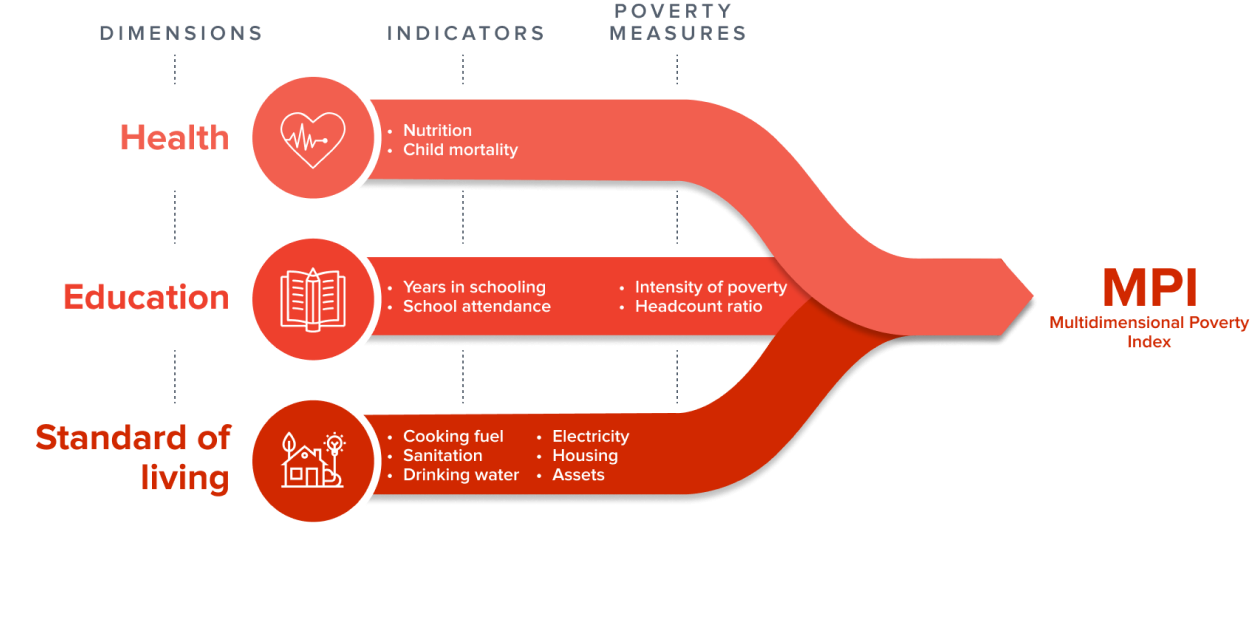 |
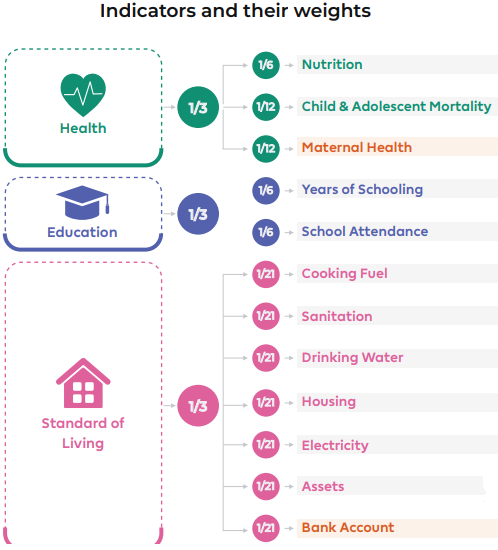 |
What are the Key Highlights of the Multidimensional Poverty Index in India Since 2005-2006?
- Overall Decline in Multidimensional Poverty:
- India has experienced a significant reduction in multidimensional poverty from 29.17% in 2013-14 to 11.28% in 2022-23, marking a decrease of 17.89% points.
- Approximately 24.82 crore people have escaped multidimensional poverty in the last nine years (2013-14 to 2022-23). This positive change is attributed to various initiatives by the government.
- State-wise Decline:
- Uttar Pradesh, Bihar, Madhya Pradesh, and Rajasthan have recorded the sharpest decline in the number of people classified as poor based on the MPI.
- Uttar Pradesh saw the largest decline with 5.94 crore people escaping multidimensional poverty, followed by Bihar at 3.77 crore, Madhya Pradesh and Rajasthan.
- Uttar Pradesh, Bihar, Madhya Pradesh, and Rajasthan have recorded the sharpest decline in the number of people classified as poor based on the MPI.
- Improvement in All Indicators:
- All 12 indicators of the MPI have shown significant improvement, reflecting progress in Health, Education, and Standard of Living dimensions.
- Severity of Deprivation:
- The Severity of Deprivation (SoD) declined at a slightly lower rate between 2015-16 and 2019-21 compared to 2005-06 and 2013-14.
- SoD measures deprivations the average multidimensionally poor person suffers from.
- At the same time, reduction of deprivation was faster after 2015-16 in terms of reduction in share of MPI poor out of total population compared to the decade before, owing to a lesser number of years.
- In 2005-06, the share of MPI poor in India’s total population was 55.34%.
- The Severity of Deprivation (SoD) declined at a slightly lower rate between 2015-16 and 2019-21 compared to 2005-06 and 2013-14.
- SDG Target Achievement:
- India is likely to achieve Sustainable Development Goals (SDG) Target 1.2, which aims to reduce "at least by half the proportion of men, women, and children of all ages living in poverty in all its dimensions according to national definitions" well before 2030.
- Indicators related to the standard of living dimension showed significant improvements, such as reduced deprivation in cooking fuel, sanitation facilities, and access to bank accounts.
- Drivers Helped in Declining MPI:
- Initiatives like Poshan Abhiyan and Anemia Mukt Bharat have significantly enhanced access to healthcare facilities, leading to a substantial decrease in deprivation.
- Operating one of the world's largest Food Security programs, the Targeted Public Distribution System under the National Food Security Act covers 81.35 crore beneficiaries, providing food grains to rural and urban populations.
- Recent decisions, such as extending free food grain distribution under Pradhan Mantri Garib Kalyan Anna Yojana for another five years, exemplify Government's commitment.
- Various programs addressing maternal health, clean cooking fuel distribution through Ujjwala Yojana, improved electricity coverage via Saubhagya, and transformative campaigns like Swachh Bharat Mission and Jal Jeevan Mission have collectively elevated living conditions and overall well-being of people.
- Additionally, flagship programs like Pradhan Mantri Jan Dhan Yojana and PM Awas Yojana have played pivotal roles in financial inclusion and providing safe housing for the underprivileged.
What is NITI Aayog?
- About:
- The Planning Commission was replaced by a new institution – NITI Aayog on 1st January, 2015 with emphasis on ‘Bottom –Up’ approach to envisage the vision of Maximum Governance, Minimum Government, echoing the spirit of ‘Cooperative Federalism’.
- It has two Hubs,
- Team India Hub acts as an interface between States and Centre.
- Knowledge and Innovation Hub builds the think-tank acumen of NITI Aayog.
- Initiatives:
- SDG India Index
- Composite Water Management Index
- Atal Innovation Mission
- SATH Project.
- Aspirational District Programme
- School Education Quality Index
- District Hospital Index
- Health Index
- Agriculture Marketing And Farmer Friendly reform Index
- India Innovation Index
- Women Transforming India Awards
- Good Governance Index
UPSC Civil Services Examination, Previous Year Questions (PYQs)
Prelims
Q. Atal Innovation Mission is set up under the (2019)
(a) Department of Science and Technology
(b) Ministry of Labour and Employment
(c) NITI Aayog
(d) Ministry of Skill Development and Entrepreneurship
Ans: (c)
Q. The Government of India has established NITI Aayog to replace the (2015)
(a) Human Rights Commission
(b) Finance Commission
(c) Law Commission
(d) Planning Commission
Ans: (d)
Mains
Q. How are the principles followed by the NITI Aayog different from those followed by erstwhile Planning Commission in India? (2018)
IUCN Assessment of the Himalayan Wolf
For Prelims: Himalayan Wolf, International Union for Conservation of Nature (IUCN)’s Red List, Ladakh and Spiti Valley, Sustainable Development Goals, Aichi Targets.
For Mains: Reasons for the population decline of Himalayan Wolfs, Measures to Protect the Himalayan Wolves, Conservation.
Why in News?
The Himalayan Wolf (Canis lupus chanco), a prominent lupine predator found across the Himalayas has been assessed for the first time in the International Union for Conservation of Nature (IUCN)’s Red List.
What Are the Key Facts About Himalayan Wolf?
- About:
- The Himalayan Wolf is a mysterious lupine predator that inhabits the high elevations of the Himalayas.
- Characterized by distinctive genetic markers, its mitochondrial DNA suggests a genetic foundation predating the Holarctic grey wolf.
- Habitat:
- It is found in parts of China, Nepal, India, and Bhutan and typically lives in alpine meadows and grasslands at elevations of 10,000 to 18,000 feet.
- They usually travel in small packs and hunt wild sheep and goats, sometimes even preying on marmots, hares, and birds.
- It is found in parts of China, Nepal, India, and Bhutan and typically lives in alpine meadows and grasslands at elevations of 10,000 to 18,000 feet.
- Population Status:
- Population estimate of 2,275-3,792 mature individuals, all within a subpopulation across the Himalayan range of Nepal, India, and the Tibetan Plateau.
- Indian section has 227-378 mature individuals, primarily in Ladakh and Spiti Valley.
- Conservation Status:
- IUCN Status: Vulnerable
- Wildlife Protection Act, 1972: Schedule I
What is the IUCN Red List?
- The IUCN Red List is the foremost global resource for assessing the risk of extinction among animals, fungi, and plant species.
- Accessible to all, it serves as a crucial indicator of global biodiversity health, it offers comprehensive insights into species' characteristics, threats, and conservation measures, playing a pivotal role in shaping informed conservation decisions and policies.
- The IUCN Red List Categories define the extinction risk of species assessed. Nine categories extend from NE (Not Evaluated) to EX (Extinct). Critically Endangered (CR), Endangered (EN) and Vulnerable (VU) species are considered to be threatened with extinction.
- It is also a key indicator for the Sustainable Development Goals and Aichi Targets.
- The IUCN Red List includes the IUCN Green Status of Species, which assesses the recovery of species’ populations and measures their conservation success.
- There are eight Green Status Categories: Extinct in the Wild, Critically Depleted, Largely Depleted, Moderately Depleted, Slightly Depleted, Fully Recovered, Non-Depleted and Indeterminate.
- A Green Status assessment examines how conservation actions have affected the current Red List status.
Why is the Population of Himalayan Wolf Continuously Declining?
- Habitat Destruction: The IUCN Red List Assessment has highlighted an ongoing reduction in the area, extent, and quality of habitat for Himalayan wolves.
- Depredation Conflict: Depredation conflict is a major conservation concern, given a seasonal or permanent high livestock abundance in wolf habitats that often form summer pastureland for livestock grazing.
- These conflicts result in a negative attitude towards wolf conservation and often trigger retaliatory killing
- Hybridization with Dogs: The report pointed out that a growing problem for Himalayan wolves in Ladakh and Spiti is interbreeding with domestic dogs. This is becoming more challenging because there are more feral dogs in these areas.
- Hybridization can contribute to increased competition for resources, such as territory and prey, between wolves and wolf-dog hybrids.
- Illegal Hunting: The wolf is also illegally hunted for trade in its fur and body parts including paws, tongues, heads, and other parts. However, hunting of these wolves is not legal in all range states.
What Measures Should be Taken to Protect the Himalayan Wolves?
- Secure and Restore: Securing and restoring healthy wild prey populations and landscapes and setting aside wildlife habitat refuges.
- Improve Guarding Methods: Improving livestock guarding methods, such as predator-proof corral pens and using sustainable livestock herding practices, including reduced livestock loads, adapted herding, and developing novel but tradition-based holistic management practices will enhance the conservation of wolves.
- Management of Feral Dog Populations: By managing the populations of federal dogs,the ecological balance in wolf habitats can be preserved.
- Transboundary Efforts : This transoundary interconnectedness is vital for the unimpeded movement of wolf populations and the safeguarding of their natural behaviors, achieved through coordinated research and monitoring initiatives
UPSC Civil Services Examination Previous Year Question (PYQ)
Prelims
Q. ‘Invasive Species Specialist Group’ (that develops Global Invasive Species Database) belongs to which one of the following organizations?(2023)
(a) The International Union for Conservation of Nature
(b) The United Nations Environment Programme
(c) The United Nations World Commission for Environment and Development
(d) The World Wide Fund for Nature
Ans: A
Mains
Q. How does biodiversity vary in India? How is the Biological Diversity Act, 2002 helpful in conservation of flora and fauna? (2018)
Swachh Survekshan Awards 2023
Why in News?
The President of India conferred Swachh Survekshan Awards 2023 at Bharat Mandapam, New Delhi hosted by the Ministry of Housing and Urban Affairs (MoHUA).
- Indore and Surat were jointly awarded the cleanest city title. Maharashtra secured the top position among states in the annual cleanliness rankings for urban areas.
What are the Major Highlights of Swachh Survekshan Awards 2023?
- About: Swachh Survekshan, conducted by the MoHUA since 2016, is the world’s largest urban sanitation and cleanliness survey.
- It has been instrumental in fostering a spirit of healthy competition among towns and cities to improve their service delivery to citizens and towards creating cleaner cities.
- It has evolved, covering an increasing number of cities each year. The 2023 round encompassed 4,416 urban local bodies, 61 cantonments, and 88 Ganga towns.
- Ranking of Cities: Indore has retained its cleanest city title for the 7th consecutive year. Surat, consistently second behind Indore in recent years, claimed the top spot for the first time.
- This year marked the first instance of two cities sharing the top prize in the annual awards since 2016.
- Both cities achieved 100% door-to-door waste collection, 98% source segregation, and 100% remediation of dumpsites.
- Navi Mumbai secured the third cleanest city position.
- Key Parameters in Evaluation: The Swachh Survekshan 2023 rankings considered various factors, including:
- Door-to-door waste collection
- Source segregation
- Cleanliness of public areas
- Clean water bodies
- Citizens’ feedback on city cleanliness
- Cleanest State Award: Maharashtra claimed the cleanest state award with 89.24% door-to-door waste collection and 67.76% source segregation.
- Madhya Pradesh secured the second position in state cleanliness rankings.
- Bottom Five States: Arunachal Pradesh, Mizoram, Rajasthan, Nagaland, and Tripura were ranked as the bottom five states in cleanliness.
- Other Specialized Awards: Chandigarh received the Safaimitra Surakshit Shehar award for the city with the best safety standards for sanitation workers.
- Varanasi was recognized as the cleanest Ganga town.
- Sasvad in Maharashtra earned the cleanest city title among those with a population below 1 lakh.
- Mhow Cantonment was declared the cleanest cantonment in the country.
Vadnagar: India’s Oldest Living City
Why in News?
A joint study by the Indian Institute of Technology (Kharagpur) and Archaeological Survey of India (ASI) has found evidence of cultural continuity in Vadnagar, Gujarat, even after the Harappan collapse.
- The study challenges the notion of a "Dark Age" by providing evidence of cultural continuity in Vadnagar even after the collapse of the Harappan civilization.
What are the Key Highlights of the Excavation at Vadnagar?
- Age of Settlement:
- The study reveals evidence of a human settlement in Vadnagar dating back to as old as 800 BCE.
- This places the settlement in the late-Vedic/pre-Buddhist Mahajanapadas or oligarchic republics period.
- Climate Influence:
- The rise and fall of different kingdoms over a 3,000-year period, as well as recurrent invasions by Central Asian warriors, are suggested to be driven by severe changes in climate, such as variations in rainfall or droughts.
- Multicultural and Multireligious Settlement:
- Vadnagar is described as a multicultural and multireligious settlement that included Buddhist, Hindu, Jain, and Islamic influences.
- The excavation uncovered seven cultural stages (periods), including Mauryan, Indo-Greek, Indo-Scythian, Hindu-Solankis, Sultanate-Mughal, and Gaekwad-British colonial rule, up to the present day.
- Archaeological Artifacts:
- Various archaeological artifacts were discovered during the excavation, including pottery, copper, gold, silver, and iron objects.
- The findings also include intricately designed bangles and coin molds from the Indo-Greek rule.
- Buddhist Monastery:
- One of the significant discoveries is the presence of one of the oldest Buddhist monasteries in Vadnagar, adding to the historical and cultural richness of the settlement.
- Radiocarbon Dates:
- Unpublished radiocarbon dates suggest that the settlement could be as old as 1400 BCE, which challenges the notion of a Dark Age.
- The "Dark Age" refers to the period between the collapse of the Indus Valley Civilization and the emergence of the Iron Age and cities like Gandhar, Koshal, and Avanti in Indian history.
- If true, it implies cultural continuity in India for the last 5500 years.
- Unpublished radiocarbon dates suggest that the settlement could be as old as 1400 BCE, which challenges the notion of a Dark Age.
Archaeological Survey of India (ASI)
- ASI, under the Ministry of Culture, is the premier organization for the archaeological research and protection of the cultural heritage of the nation.
- Maintenance of ancient monuments and archaeological sites and remains of national importance is the prime concern of the ASI.
- Besides it regulate all archaeological activities in the country as per the provisions of the Ancient Monuments and Archaeological Sites and Remains Act, 1958. It also regulates Antiquities and Art Treasure Act, 1972.
- It was founded in 1861 by Alexander Cunningham- the first Director-General of ASI. Alexander Cunningham is also known as the “Father of Indian Archaeology”.
Harvest Festivals
Why in News?
Recently, the Prime Minister of India has greeted people across the nation on the occasion of Harvest Festivals Makar Sankranti, Uttarayan, Bhogi, Magh Bihu and Pongal.
- Along with these festivals Rooster Fights are organized in some parts of Andhra Pradesh.
What are the Harvest Festivals in India?
- Makar Sankranti:
- Makar Sankranti denotes the entry of the sun into the zodiac sign of Makara (Capricorn) as it travels on its celestial path.
- The day marks the onset of summer and the six months auspicious period for Hindus known as Uttarayan – the northward movement of the sun.
- As a part of the official celebration of 'Uttarayan', the Gujarat government has been hosting the International Kite Festival since 1989.
- The festivities associated with the day is known by different names in different parts of the country:
- Lohri by north Indian Hindus and Sikhs,
- Sukarat in central India,
- Bhogali Bihu by Assamese Hindus, and
- Pongal by Tamil and other South Indian Hindus.
- Bihu:
- It is celebrated when the annual harvest takes place in Assam. People celebrate Magh Bihu/Bhogali Bihu to mark the beginning of the Assamese new year.
- It is believed that the festival started from the time when people of the valley started tilling the land.
- Pongal:
- The word Pongal means ‘overflow’ or ‘boiling over’.
- Also known as Thai Pongal, the four-day occasion is observed in the month of Thai, when crops such as rice are harvested and people show their gratitude to the almighty and the generosity of the land.
- Tamilians celebrate the occasion by making traditional designs known as kolams in their homes with rice powder.
What is a Rooster Fight?
- About:
- A rooster fight, also known as "Kodi Pandalu" in local parlance, involves specially bred and trained birds with sharp leg blades in a small arena, where they fight until one is killed or critically injured. Betting on these fights is common, resulting in significant sums changing hands.
- Laws Related to Rooster Fights:
- Rooster Fights are banned under Prevention of Cruelty to Animals (PCA) Act, 1960. It includes provisions that prohibit the organization and participation in animal fights.
- Additionally, the Supreme Court of India has issued rulings banning the use of animals for entertainment purposes, including in events like rooster fights.
National Startup Day 2024
National Startup Day is observed annually on 16th January to appreciate and promote the Indian Startup Ecosystem.
- Startup India initiative was launched on 16th January, 2016, with a vision to cultivate innovation, support startups, and stimulate investments.
- The eighth anniversary in 2024 marks significant growth, with the program expanding from 400 startups in 2016 to over 1.18 lakh startups.
- Recognized entities enjoy various government benefits, such as compliance self-certification, patent application assistance, and tax exemptions.
- Notably, the SIDBI Fund of Funds scheme has granted 2,977 income tax exemptions and funded 3,658 startups, emphasizing financial support.
- The Startup India program encompasses initiatives like the Seed Fund scheme and Credit Guarantee Scheme, further aiding startups.
Read more: Startups in Emerging Technology
Foraging Traditions of Soliga and Yerava Tribes
The Soliga tribe in Karnataka, part of the Cauvery Basin, practices ancient honey collection using traditional techniques with vines and bamboo ropes.
- They, along with the Yeravas in the Western Ghats, have lived in the region for thousands of years, relying significantly on honey from the Western Ghats in their diet.
- The book "Forgotten Trails: Foraging Wild Edibles" explores how foraged foods make up a substantial part of both tribes' diets, emphasizing the importance of preserving traditional foraging knowledge.
- Foraging not only ensures survival but also strengthens community bonds, passing on essential skills to the younger generation and fostering unity and coexistence.
Read more: Honey Mission and Sweet Revolution
Ex-Ayutthaya and The 36th edition of Indo-Thai CORPAT
The Indian Navy and Royal Thai Navy (RTN) conducted a maiden bilateral exercise, named 'Ex-Ayutthaya' and the 36th edition of India-Thailand Coordinated Patrol (Indo-Thai CORPAT) was also conducted along with the maiden bilateral exercise.
- The 'Ex-Ayutthaya' translates to 'The Invincible One' or 'Undefeatable', and "symbolizes the significance of two of the oldest cities, Ayodhya in India and Ayutthaya in Thailand, the historic legacies, rich cultural ties and shared historical narratives dating back to several centuries.
- Indigenously built Indian Naval ships Kulish and IN LCU 56 participated in the inaugural edition of the exercise. The RTN side was represented by His Thai Majesty's Ship (HTMS) Prachuap Khiri Khan.
- Maritime Patrol Aircraft from both navies participated in the Sea Phase of the exercise.
Read More: SAGAR Vision
DRDO Launches Indigenous Assault Rifle 'Ugram'
The Defence Research and Development Organisation (DRDO) has launched an indigenous assault rifle named 'Ugram', intended to meet the operational requirements of armed forces, paramilitary, and state police entities.
- It has been developed by the Armament Research and Development Establishment (ARDE), a unit of DRDO and Hyderabad-based private firm Dvipa Armour India Private Limited.
- The Ugram is intended to replace the aging INSAS rifle currently used by the Indian Armed Forces.
- It has been developed as per the General Staff Qualitative Requirements (GSQR) of the army into consideration.
- GQSR is one of the initial processes in capital procurement. It outlines why the equipment is required, its physical and operational details, as well as the maintainability and quality requirements.
- Features:
- The rifle, with a calibre of 7.62 x 51 mm, has been designed, developed, and manufactured in collaboration with a private industry partner.
- It has an effective range of 500 metres and weighs less than four kilograms.
Read More: DRDO, Innovations for Defence Excellence


.png)
.png)
